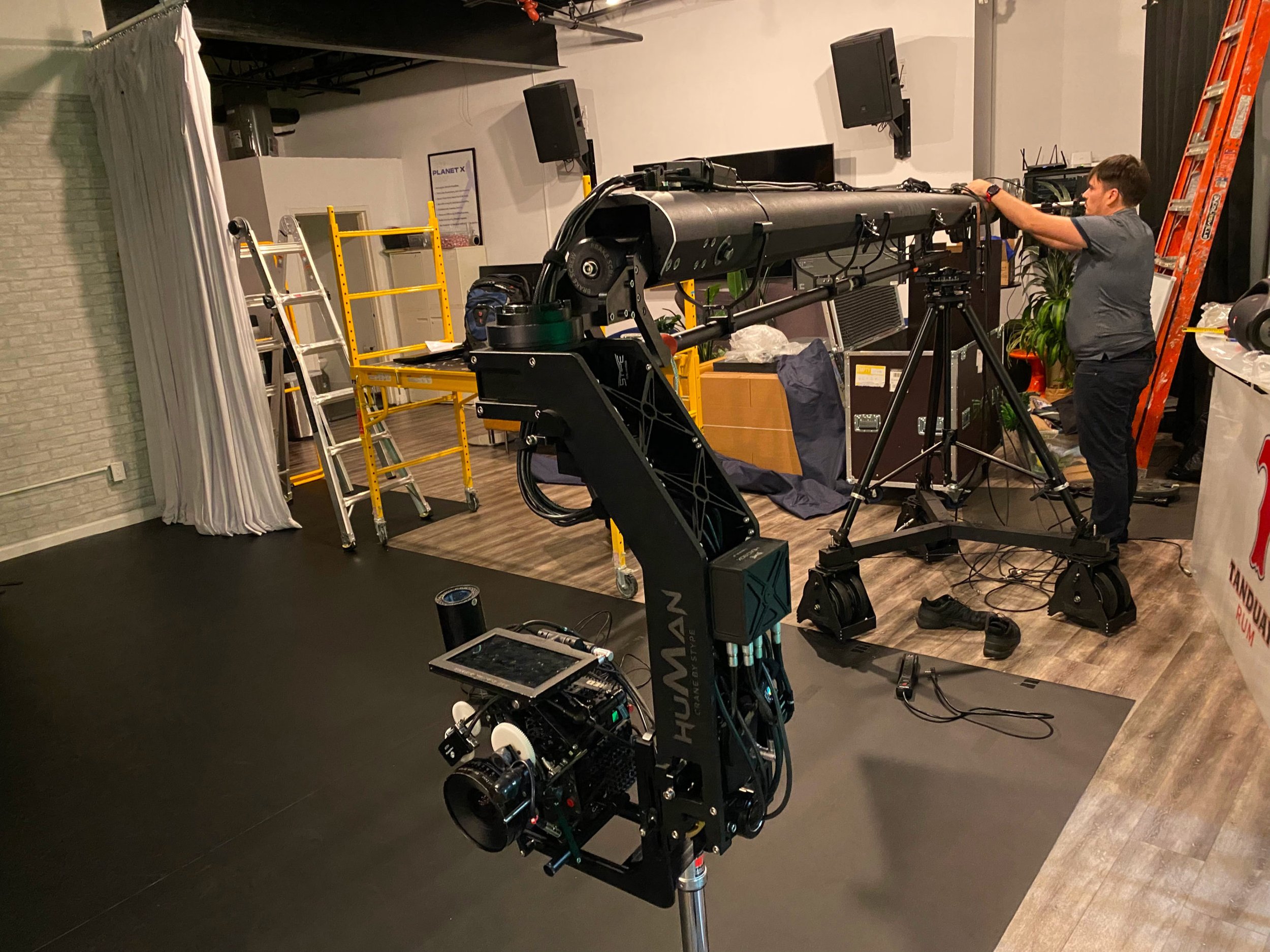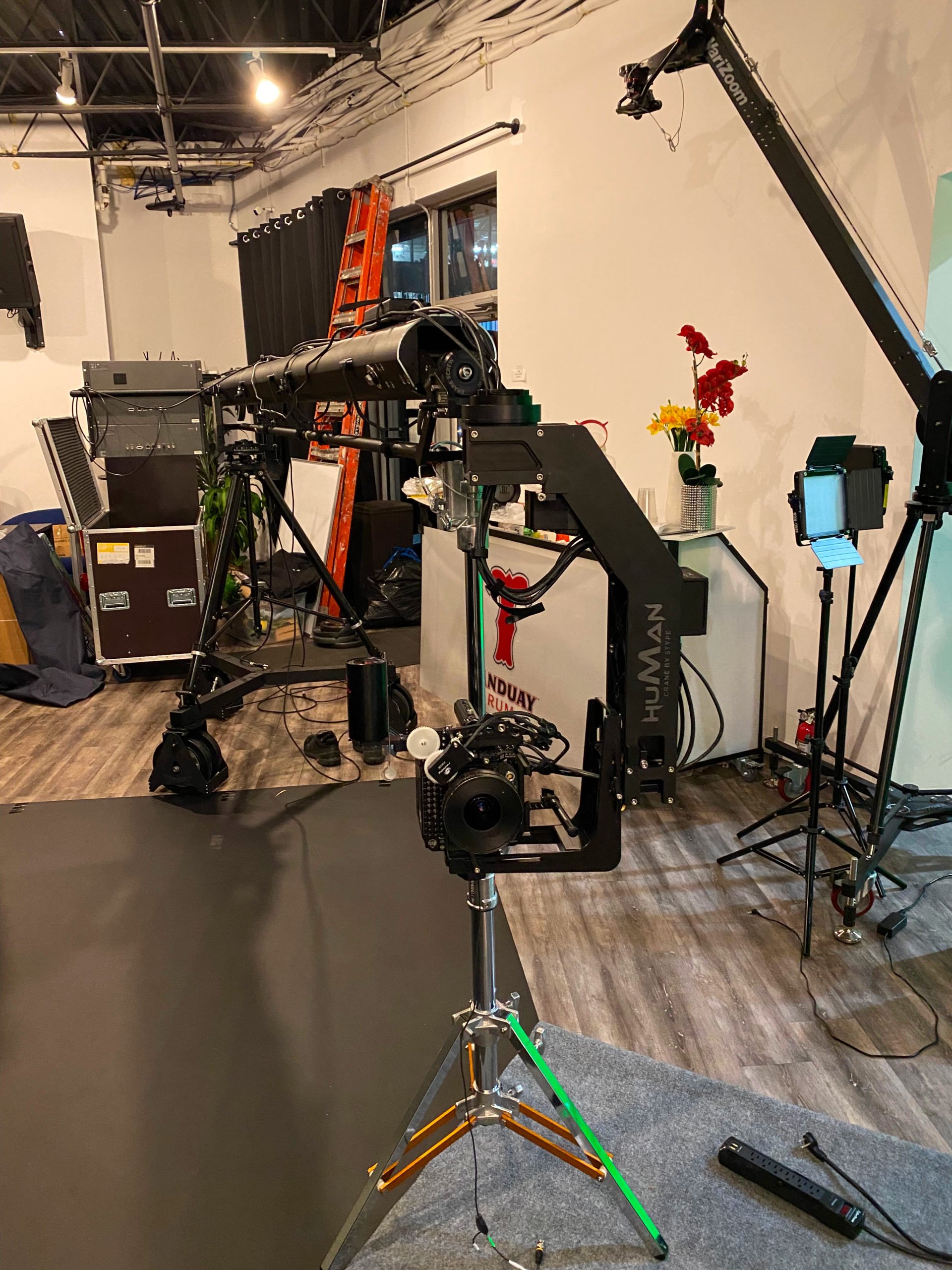Best LED Video Wall Studio
LED Video Wall Rental NYC
LED Video Wall Studio Rental Special Summer Sale.
$6,950
Reduced from $10,000, the sale includes the 27' X 10' wall, our entire Brooklyn Flatbush XR studio, our senior wall tech, as well as the server and the control room.
And additional days are just $4500
A 6ft x 6ft rolling panel can be placed around the talent in a way that gives them more creative options, like direct reflections on their faces and realistic lighting.
4K LED WALL STUDIO
2100 sqft.
Cutting-edge LED Volume- including a 27ft x 10 ft smoothly curved 4K LED Wall, and 12ft x 12ft LED Ceiling - both 1.9mm pitch LEDs.
LED Volume can be used for real-time Unreal Engine 5.4 virtual production or display any type of video content via in-house Resolume Arena servers.
In-house Unreal Engine workstations running Pixotope and Stypeland XR.
Pre-configured for real-time camera tracking using Stype RedSpy integrated with Unreal Engine.
Motorized Stype HumanCrane automated crane with RED Komodo Dragon 6K camera pre-mounted, as well as 4K remote monitoring.
American Movie Company’s LED Wall Studio Rental: A background that works with you.
$6,950 Ten Hour Day
Our LED Video Wall is available in various screen configurations and creative screen arrangements.
Huge New 27′ curved LED Video Wall Rental at Brooklyn Flatbush VFX Studio.
27’ wide by 10’ high-quality curved LED Video Wall and has a ceiling
FLOORPLAN
Our LED Video Wall Stage With New Robotic Head Kit



American Movie Company LED Video Wall Rental
You may have, of late, been hearing the term “Virtual Production” perhaps in hushed tones between takes on location or on set in one of American Movie Company’s traditional sound stages.
Speculation on this new LED Video Wall tech has escalated ever since Disney’s high-profile series, The Mandalorian, debuted its use as the core of the show’s production process earlier this year.
With speculation rising that Virtual Production will eventually become the standard for how major motion pictures are shot – and that it might potentially replace green screens in the long term – we at AMC partnered with the industry leaders behind the tech to make this cutting-edge technology available to your productions, effective immediately!
Take your production to the next level by shooting at our LED Video Wall Stage.
Put simply, Virtual Production unites decades of advances in software with major technical leaps in the hardware of LED surfaces.
The background could be the dunes of an extraterrestrial Tatooine (I don’t mean to condescend – a gentle reminder – Star Wars – the desert planet, homeworld of Anakin and Luke Skywalker.) or the interior of a lamp-lit Parisian restaurant.
In The Volume, actors are lit with the ‘correct’ natural lighting appropriate to the virtual world around them, in the studio and on camera, because the screen isn’t just a screen – it is the lights.
Virtual Production means shooting on a sound stage with a specially constructed curved LED Wall and ceiling that together form a behemoth known as The Volume. It envelops the actors in a virtual display – like a giant curved TV screen – of any conceivable environment you load into it. It lights the actors with the same lighting profile that’s illuminating the virtual objects seen on screen.
Shooting in front of an LED Video Wall background gives your production the flexibility and spontaneity of shooting on location, with the shot control that a closed sound stage offers.
Our LED Video Wall Stage is Where Production and Post-Production Sync Up.
Virtual production at our LED Video Wall Stage allows a director to say, “Great work, let’s do another take, but this time let’s try it at sunset.” An on-hand Unreal tech rotates the virtual sun in the level editor, the light then propagates onto the environment and onto the actors via the LEDs, and immediately – in real-time – the crew is ready for another take under entirely new circumstances.
The same goes for holding ‘Magic Hour’ for longer than 15 minutes, sending the sun zooming across the sky to re-create an otherwise time-consuming timelapse, moving mountains and every other object in the environment until they look “just right,” or loading in multiple environments to film in over the course of a single shooting day.
The impact this can have on performances, let alone production, seems hard to overstate. But one thing is certain, regardless of the artistic advantages, the practical benefits of shooting at our LED Video Wall stage are a game-changer in and of themselves for a production’s bottom line.
An ordinary digital backdrop that would be unconvincing as soon you move the camera due to lack of a natural parallax between foreground and background elements (the shifting of background objects in response to a change in perspective that real-world environments exhibit.)
With Virtual Production, the camera is tracked at all times, and the elements in the digital renderer carefully shift in response to the camera’s tilts. Powering all of this is the Unreal Engine, which hosts the 3D environment.
LED Video Wall Stage is Much More Than a Backdrop.
Famous as a platform for Triple-A videogame development, including Fortnite, Epic Games’ Unreal Engine has, in recent years, become more multi-purpose, finding itself a leading element in just about every industry that demands real-time photorealism within its pipeline. As a result, Unreal has made its way into architecture, AI, automotive simulations, and now film production.
The benefit for artists using Unreal is that the environments that form their sets exist now within an immediately editable, relatively user-friendly program – meaning the abilities that were at one time strictly those of special FX artists are now available to the director and crew on set. Fortunately, Unreal is a program that doesn’t require an advanced degree to understand. Logic rules!
















